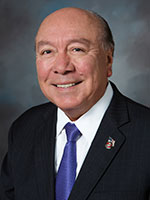
Texas Border Business
By State Senator Juan “Chuy” Hinojosa
An ongoing federal investigation has recently revealed that energy savings performance contracts (ESPCs) were being used to make kickback and bribe payments to local elected officials in western Hidalgo County. The wide-ranging investigation involves Performance Services Inc. (“PSI”), an Indiana-based company that convinced these local governments to borrow millions for “energy savings” projects. The investigation came to light after five local governments and more than a dozen public officials or companies affiliated with them received federal grand jury subpoenas in May 2021. As the FBI continues its investigation, federal prosecutors already secured the conviction of a La Joya ISD trustee who admitted to receiving more than $234,000 in kickbacks.
ESPCs have been abused in other ways. This past session, I passed House Bill 3583 that begins to address the misuse of ESPCs. Recently, there have been instances where local governments used ESPCs as a back door for no-bid contracts to circumvent procurement statutes related to public works projects. ESPCs were being inappropriately expanded beyond their original scope to build unrelated facilities and structures.
Understanding this type of procurement misuse requires some background of how ESPCs are formed. Often times, the idea of using an ESPC comes from construction contractors or service companies with the pitch to local officials that they are losing thousands of dollars in energy costs and that the solution is an ESPC. Although ESPCs are often thought of as a financing mechanism, ESPCs are more accurately characterized as a construction procurement method for energy, water, renewables, and resilient capital improvement projects that are paid for using money saved from improved energy efficiency and reduced operating expenses. Local governments obtain the services of companies like PSI using the same procurement method for the professional services of architects and engineers. State law prohibits the use of the more comprehensive procurement method used for construction projects which provides more regulation of bidding and transparency. This law, as it relates to ESPCs, needs to be changed.
The cost of ESPCs can be increased by millions of dollars by simply executing a “change order” proposed by the contractor. What starts out as a defined, narrowly focused ESPC project to address certain facilities may soon grow into a proposal through a change order to overhaul heating, ventilation, and air conditioning (HVAC) systems, lighting, plumbing, and water systems. Expanded project scope increases will result in an even larger financial burden to taxpayers if the promised savings fail to materialize.
HB 3583 partially addresses this problem. HB 3583 prohibits certain change orders to ESPCs and specifies that ESPCs do not include the design or new construction of certain water projects. The new prohibitions apply to counties, cities, and other political subdivisions of this state; but not to school districts. ESPCs were never intended to open the door to accruing massive public debt under the auspices of energy savings and undermining transparency and competition.
In practice, ESPCs may be based on “too good to be true” guarantees that fail to deliver the promised savings, leaving taxpayers on the hook for expensive construction-related projects. Government entities commonly enter into lease-purchase agreements (“LPAs”) with the service company to finance the upfront costs of the ESPC. LPAs create a problem because LPAs are also a debt instrument that does not require an election seeking taxpayer approval. Entities can often avoid voter referendums by treating LPAs as “off-balance sheet” transactions if the LPA includes the right clauses. PSI has contracts with the City of Mission in 2021, La Joya ISD in 2017, and Agua SUD in 2018. La Joya agreed to borrow a total of $44 million for their two-phase project, Mission agreed to borrow nearly $17.3 million for their project, and Agua SUD’s ESPC project reached $11.5 million.
Considering the FBI’s ongoing investigation, I will continue to study the procurement method of ESPCs and the lack of oversight of local governments and school districts using ESPCs. Unlike ESPCs for state agencies and institutions of higher education, there is no state agency providing guidelines and approving contracts to verify that ESPCs contain the required amount of guaranteed savings. I will also look into extending the change order limitations established under HB 3583 to school districts. Eliminating this loophole, which poses significant financial and operational risk, should be applicable to all governmental entities.













